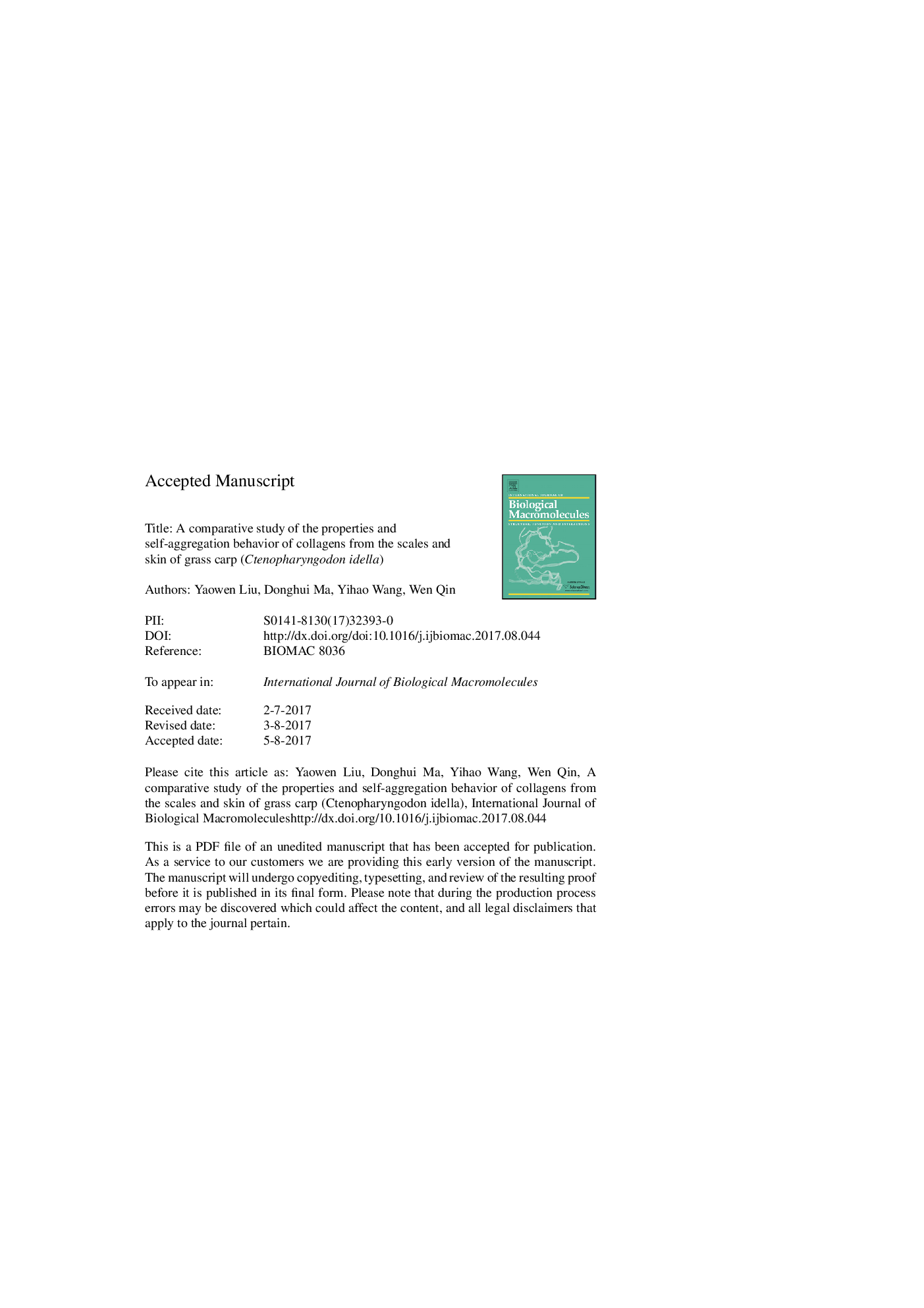| Article ID | Journal | Published Year | Pages | File Type |
|---|---|---|---|---|
| 8329150 | International Journal of Biological Macromolecules | 2018 | 15 Pages |
Abstract
Collagens were extracted from the scales and skin of Ctenopharyngodon idella (C. idella) as raw materials using an acid-enzyme hybrid method. The structural properties of the extracted collagens were compared using ultraviolet-visible spectrophotometry, Fourier transform infrared spectroscopy, sodium dodecyl sulfate-polyacrylamide gel electrophoresis, and differential scanning calorimetry. Additionally, the in vitro self-aggregation behaviors of the two types of collagens (fish skin- and scale-derived collagens) were compared using turbidimetric assays, aggregation assays, and scanning electron microscopy (SEM). The results showed that both types of extracted collagen were typical type I collagen with two α chains and intact triple-helical structures. The denaturation temperatures of the collagens from fish scales and skin were 34.99 °C and 39.75 °C, respectively. Both types of collagens were capable of self-aggregation in neutral salt solution at 30 °C, with aggregation degrees of 28% and 27.33% for the scale and skin collagens, respectively. SEM analysis revealed that both types of collagens could self-aggregate into interwoven fibers, and the fish scale-derived collagen had a more pronounced reticular fiber structure with a striped periodic D-band pattern of collagen fibrils, whereas the collagen fibers from the self-aggregation of fish skin-derived collagen had a certain degree of disruption without any D-band pattern.
Keywords
Related Topics
Life Sciences
Biochemistry, Genetics and Molecular Biology
Biochemistry
Authors
Yaowen Liu, Donghui Ma, Yihao Wang, Wen Qin,
